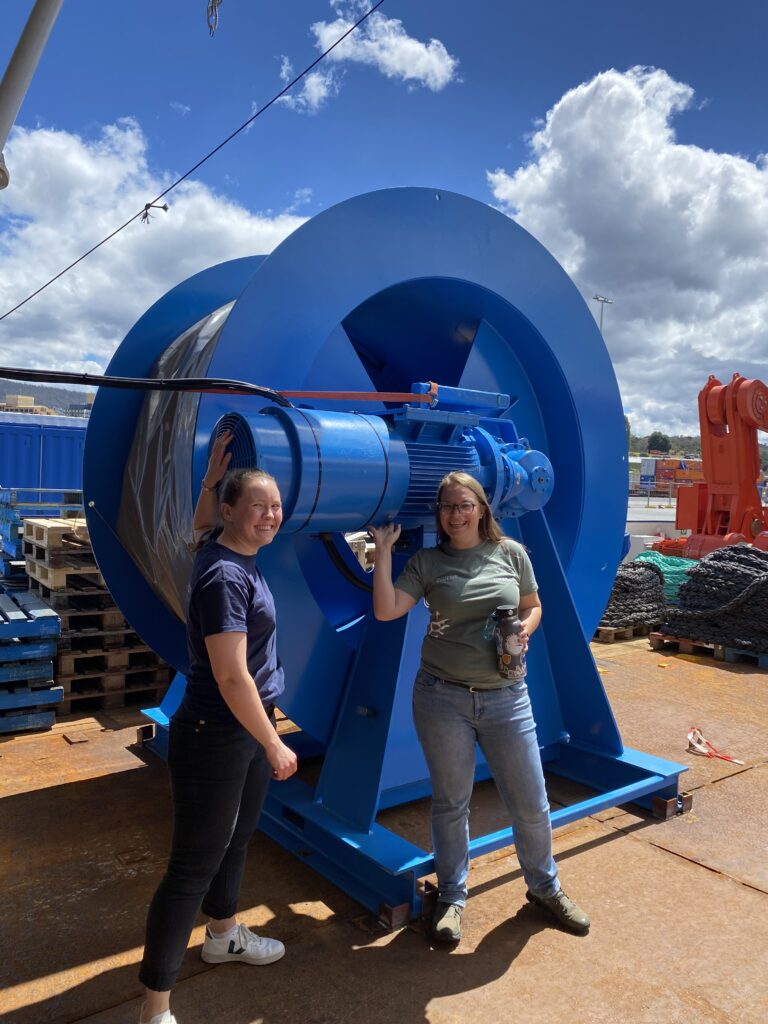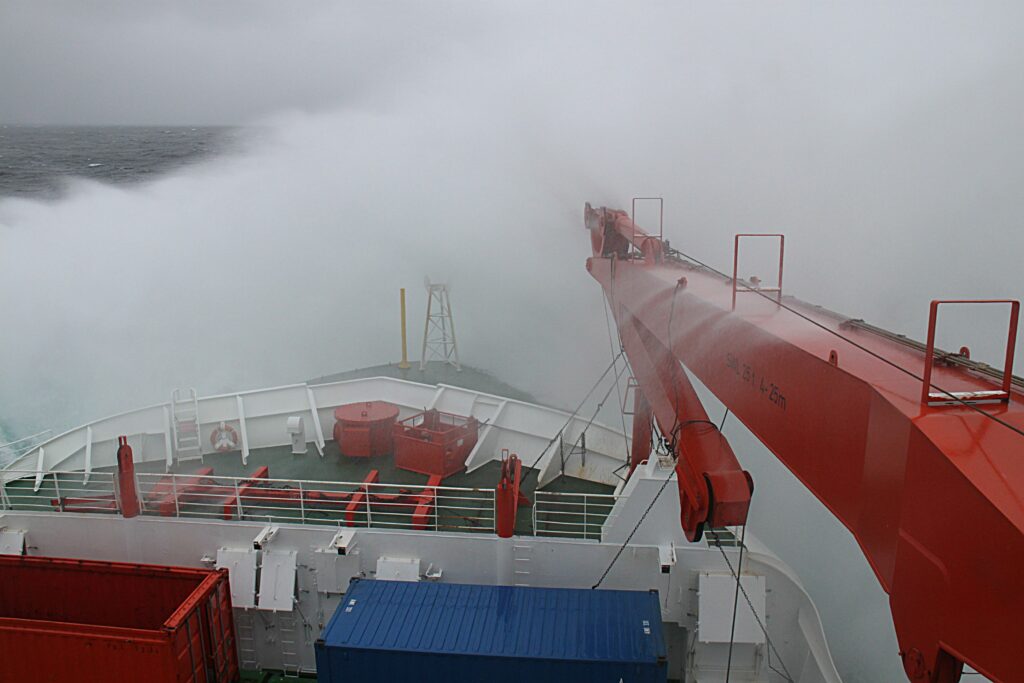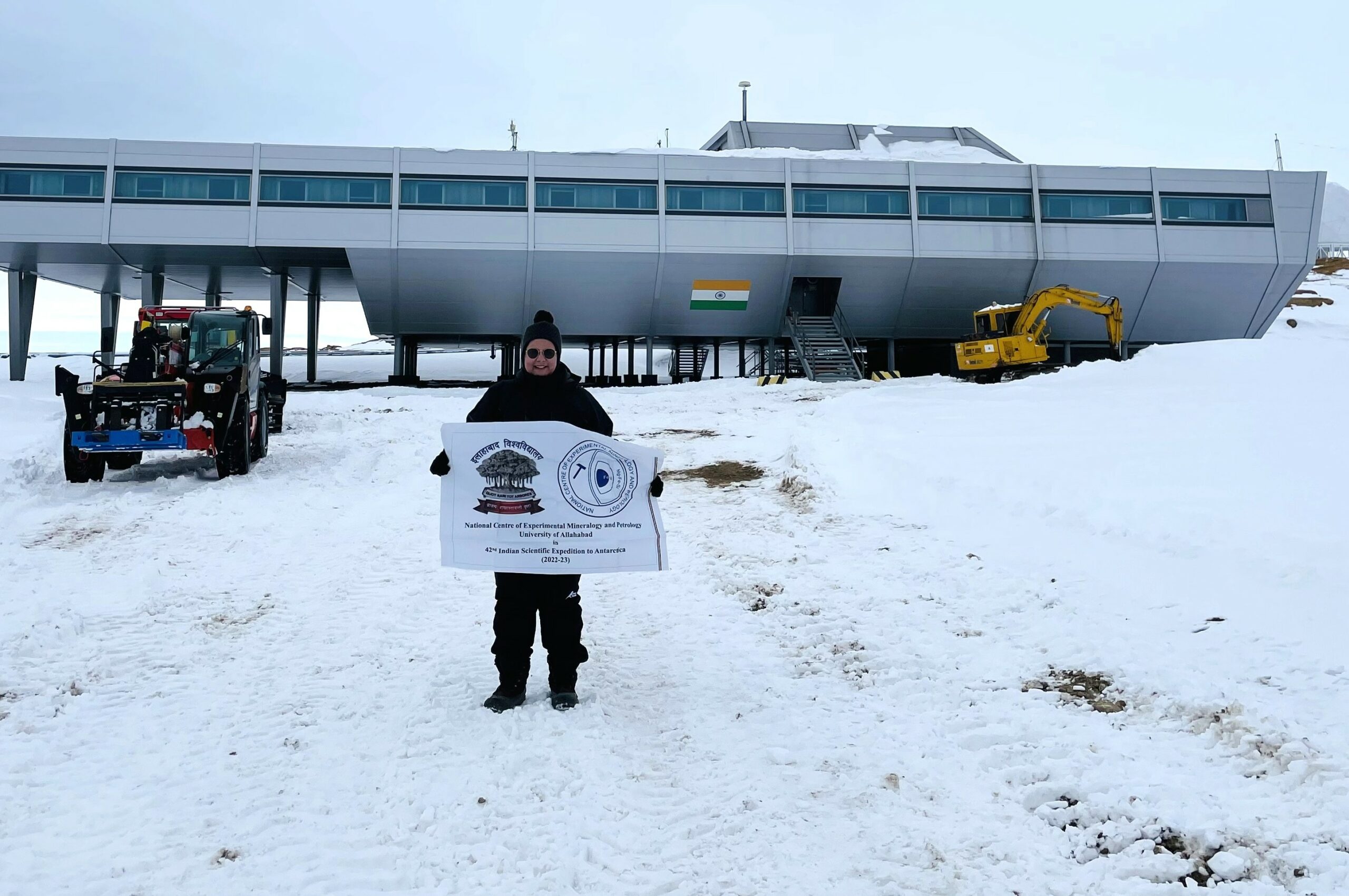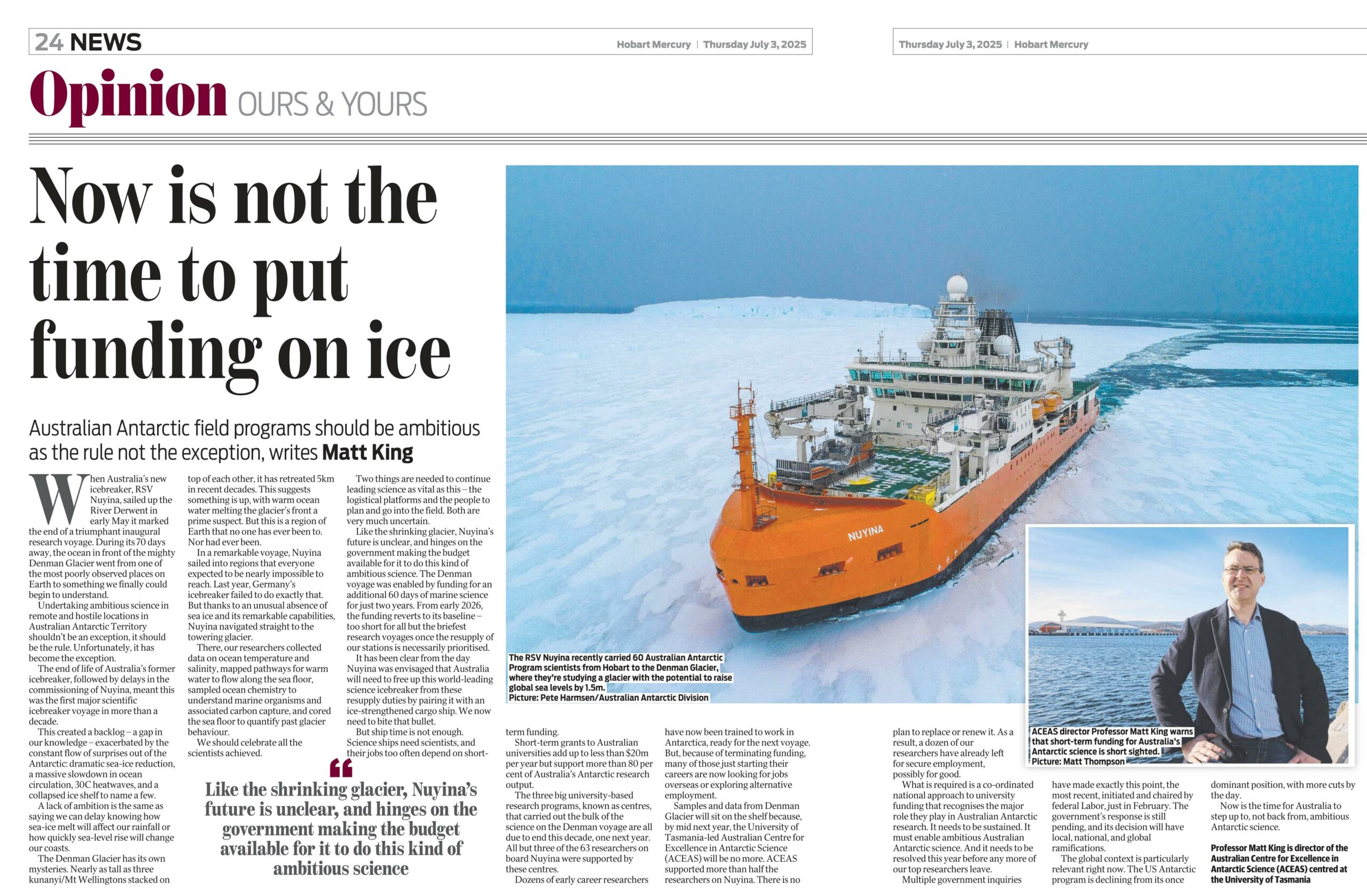Polarstern heads south to uncover East Antarctic mysteries

Dr Rachel Barrett (University of Kiel) with Dr Katharina Hochmuth aboard the RV Polarstern before its departure from Hobart. Image: Jodi Fox.
February marked many momentous occasions for Antarctic science, including the first visit to Australia for the Alfred Wegner Institute’s RV Polarstern.
A range of events unfolded in Hobart earlier this month to welcome the vessel—highlighting the international collaborations it supports and building future collaborations between Germany and Australia.
The Polarstern is now on-route to Antarctica on the EASI-3 voyage, with two ACEAS | IMAS researchers on board—Dr Katharina Hochmuth and Dr Jodi Fox.
The focus of the voyage aligns with a key area of ACEAS research: to better understand how the East Antarctic Ice Sheet has responded to past and current climate change, so we can better predict and inform communities how it will likely respond in the future.
The fieldwork involves surveying, sampling and recording the interactions between the icesheet and the Southern Ocean.


Left: The RV Polarstern visited Australia for the first time in February 2024, ahead of the EASI-3 voyage. Image: Jodi Fox. Right: A number of events were held to highlight the importance of the Antarctic work, including a public panel on tipping points (including ACEAS Director Prof Matt King as a speaker). Image: Embassy of the Federal Republic of Germany.
Dr Katharina Hochmuth: mapping the deep and ancient
Dr Hochmuth will stay with the research vessel on the Southern Ocean for the duration of the voyage. She is a marine geoscientist who maps sediment distribution around Antarctica—particularly on the continental shelves.
“The continental shelves are where the icesheet meets the ocean and are therefore the most vulnerable point of the ice sheet,” Dr Hochmuth said.
This point is where the ice is exposed to ocean waters and is locally melted from below.
“By investigating the sediments on the continental shelf, we can go back in time and understand how this mechanism worked when the icesheet was larger than it is today,” Dr Hochmuth said.
“This part of Antarctica was connected to Australia before the opening of the Southern Ocean 120M years ago,” she said. “And the base rock of Antarctica is a lot older (1150 Ma) than that in this region.”
Dr Hochmuth said there are major uncertainties in how the ice sheet developed in the Australian Antarctic sector. She said it is a mystery just how far back in time the data from the sediment samples from this voyage can go—but she hopes they can help pinpoint the first appearance of the icesheet.
“This voyage is the first to collect the geophysical and geological data on the continental shelf to tackle those questions.”
Dr Jodi Fox: searching for clues down below and up high
Dr Fox will depart the vessel upon arrival in the Southern Ocean and fly by helicopter to camp atop the Gaussberg volcano (Mount Gauss). This is the only volcano in East Antarctica, though it is now dormant and possibly extinct.
Dr Fox is an experienced volcanologist and has conducted field work on volcanoes across the world, including in Australia, Iceland, Japan and New Zealand.
This expedition is her first land-based trip to Antarctica. The nearest station is 200 kms away from the site. The volcano sits more than 300 m above ground, but 1,200 m below the ice.
“We don’t know much about what types of bedrock are beneath the ice sheet or what the volcanic history of Gaussberg volcano is—or how it has interacted with the ice sheet in the past,” Dr Fox said.
She will be collecting rock samples and data that collaborating ACEAS scientists will use to determine when the volcano was exposed to the atmosphere. The technique is called ‘cosmogenic dating’. The findings will be important as they can indicate when the ice sheet melted enough to expose the volcano.
“Gaussberg volcano is a relatively young volcano that began erupting beneath the ice around 56,000 years ago,” Dr Fox said.
She will collect further rocks, sediments and field observations to analysis and better predict how thick the ice was above the volcano when it erupted. This data can help models determine how the ice sheet responded to past climate change—and how it might respond to future climate change.
Dr Fox will also assist her four other team members camping atop Gaussberg with her to collect geophysical observations that can help uncover how the solid Earth responds to changes in ice sheet mass.
“Although the outer surface of Earth appears rigid, when it is loaded and unloaded by ice the Earth deforms and the interior begins to flow,” Dr Fox said.
“This process is known as Glacial Isostatic Adjustment. This can have local, regional and global effects—causing land to very slowly rise or sink, with implications for changes in sea level.”

Challenging living conditions
Dr Hochmuth says she is prone to seasickness for the start of any ocean journey. And the trip from Hobart to the Southern Ocean is not particularly smooth.
“Personally, I also very much enjoy life and working on a ship—getting to work outside on deck, assisting the ship’s crew with deploying gear or watch icebergs drift by, but with the comforts of a warm tea or coffee just a couple of doors away in the galley,” she said.
“And I can be found doing laps around the ship across the various decks as my evening stroll.”
It will be a different setting for Dr Fox, where remote, cold and icy conditions are challenging for both general living and work.
“It is important to work well with your team members so that you each can get your main data collection goals achieved,” Dr Fox said.
“Field work plans in Antarctica are notorious for being impacted by rapid changes in weather, sea ice conditions and logistic requirements so it is important to be prepared and flexible and have several back up plans.”
But, she is excited for the experience.
“It is a privilege to be able to do science in such a remote location and I feel it is important to contribute to understanding the changes we see on our planet and in Antarctica.”
Marine geodesist Jack Beardsley from the University of Tasmania is also on board, deploying and upgrading GPS equipment on behalf of ACEAS Director Prof Matt King. The equipment will be used to measure the motion of the Earth’s crust.

Follow the RV Polarstern: https://follow-polarstern.awi.de/


